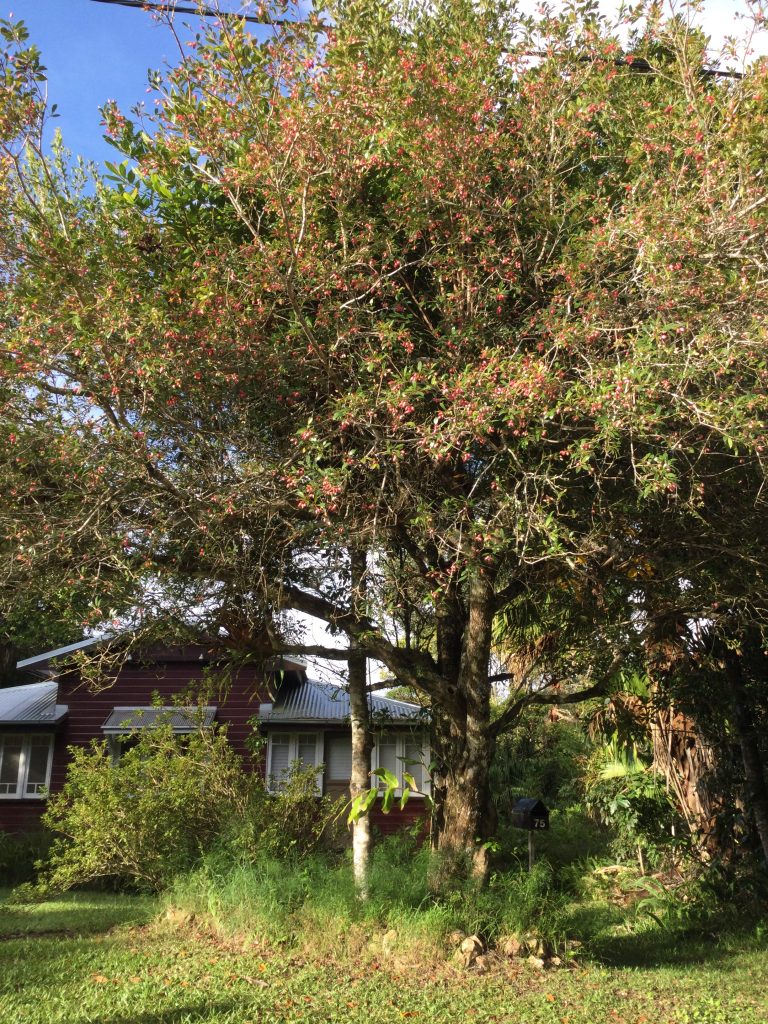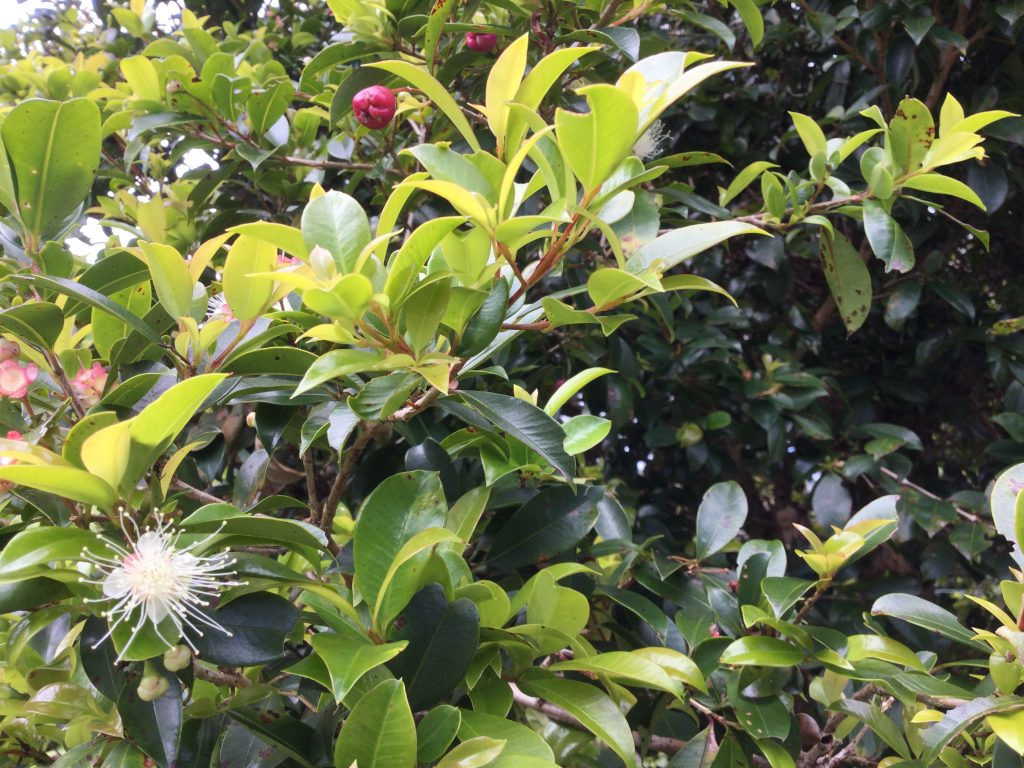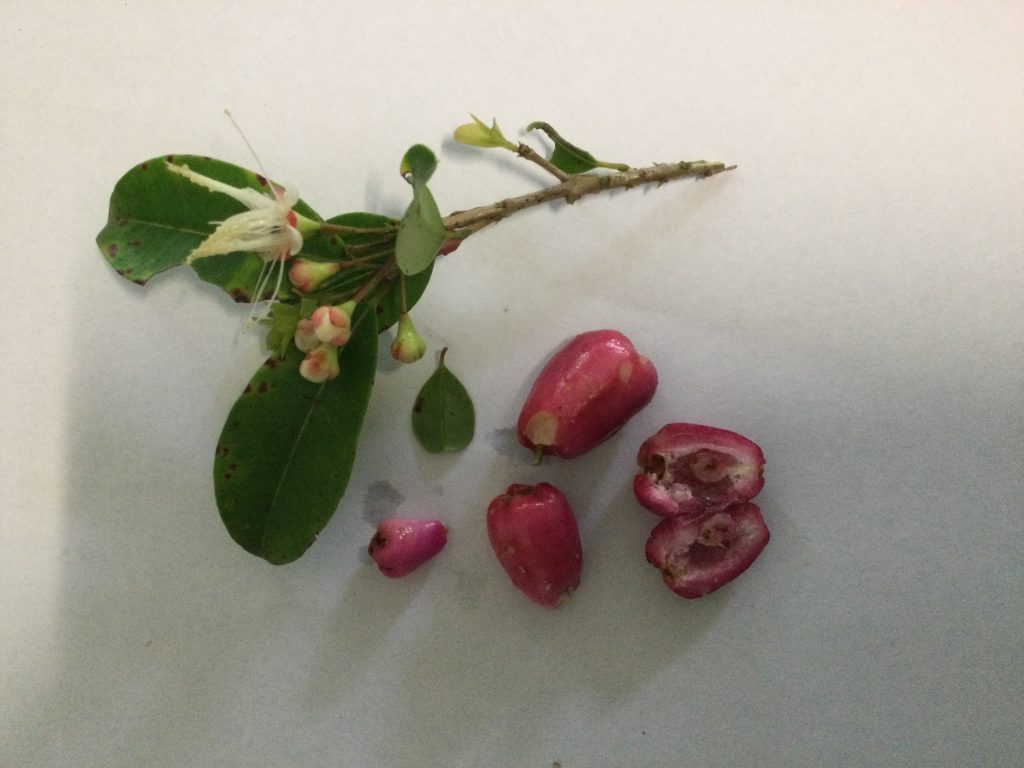This attractive rainforest tree, a member of the Myrtaceae family, has many common names, including, brush cherry, scrub cherry, creek lilly-pilly, creek satin-ash and watergum. It grows mostly along water courses in rainforests and gallery forests at altitudes up to 1300 metres.

Worldwide, there are more than 1000 species of Syzygium ranging across PNG, the Pacific islands, Malaysia, SE Asia, India, Africa and Australia. Australia has 57 species, with 47 of them in tropical Queensland. Some species, easily recognisable are Paperbark satin-ash (Syzygium paparaceum with its purple fruit; Powder-puff lilly-pilly, (Syzygium wilsonii), with small purple fruit and a sub-species noted for its large magenta powder-puff flowers and lush creamy white fruit.
It is easy to understand how various Syzygium species, along with many other native Australian flowers, inspired May Gibbs to create her delightful bush babies. Who could forget the movie magnate’s daughter, Lilly Pilly with her skirt, beret and muff made of lilly-pilly berries.
Although Syzygium australe can grow to 35 metres with a trunk diameter of 60 cm, it is a popular plant in ornamental gardens as it can be shaped and pruned into hedges. It is a fast-growing tree and can grow 2 metres in a year.

The ovate leaves are simple, opposite and approximately 30×100 x 10-40 mm. Young leaves are bronze, turning to a deep, glossy green as they mature. They form dense foliage on this shapely tree.


photo by J. Oliver
Flowering can occur at any time of year. Flowers are clustered in axillary or terminal racemes. They are tiny, with white petals and numerous white stamens which give the flowers the appearance of delicate powder-puffs. Flowering can be sparse, hiding amongst the leaves, or abundant, giving a dense cover of white. Flowers are followed by a profusion of red fruit – berries. These are 14-23 mm long with one or two seeds surrounded by crisp flesh similar to apple in texture. The fruit is edible, although can be tart. It makes excellent jam and can be used as a base and flavouring for jellies, cakes and wine.
Some species of Syzygium were previously classified in the genus Acmena and others in the genus Eugenia. The species known formerly as Eugenia Australis is now regarded as two separate species: Syzygium australe and Syzygium paniculatum.
There are many examples of Syzygium australe in Paluma. A very old tree which usually bears fruit in profusion is outside No 75 Mount Spec Road, another, is outside the High Ropes course. Two more may be seen outside No 17 Mount Spec Road.
Text and photos (unless indicated) by Colwyn Campbell

Thanks for the very informative post. Although we don’t make it to most of the morning teas and social occasions we do enjoy learning about all the trees, flowers, wildlife etc in these bulletins.
Relating to May Gibbs I thought I saw what looked like a banksia, but with darker flower/brush. Do they grow up here? as I only thought of them as dry coastal plants
Cheers, Julia and Ian Anderson